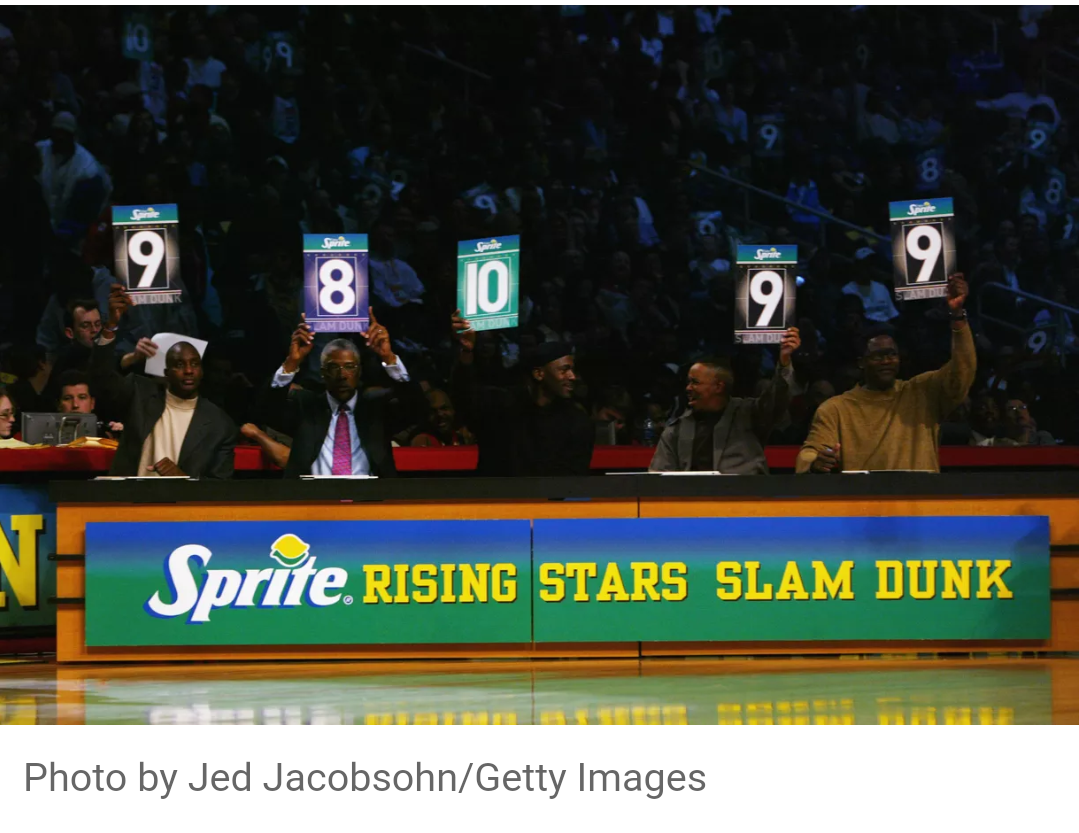A complete history of the many different rules for the NBA Slam Dunk Contest.
The league’s marquee Saturday night event has seen a whole lot of rule changes over the years. Some have stuck. Others ... not so much.

The NBA Slam Dunk Contest, for better or worse, has seen some things. All-Star Weekend’s most popular event has produced iconic moments and built up legendary players ... but it has had some real duds, too.
This year’s All-Star events begin on Saturday, Feb. 17, at 8 p.m. ET on TNT.
The Dunk Contest will stick with a relatively traditional format. Here are the rules:
Four contestants, who each dunk twice in the first round
Two contestants with the highest combined scores from the first round will advance to the second round
The contestant with the highest combined score in the second round is the winner
Dunks are evaluated by five judges and can earn up to 50 points
But the dunk contest has explored and suffered through many different variations of these rules since it began in 1984. Here’s how different Dunk Contests were conducted.
Participants:
The inaugural 1984 Dunk Contest featured nine participants, and there were three rounds. In 1985, the final two from 1984, Julius Erving and Larry Nance, were given first round byes, and six contestants competed to join them in the semifinals. The number of contestants slowly declined until it finally became four in 2002.
In the infamously bad 2013 and 2014 Dunk Contests, the number of contestants was briefly increased to six. By 2015, we had settled on four dunkers again, just like the current iteration.
Scoring
Five judges each assign scores between one and 10, with 50 being a perfect dunk score, has remained relatively consistent throughout the event’s history. From 2008 to 2011, the final round (with two contestants attempting two dunks each) was decided by text message voting, playing off shows like American Idol. In 2012, votes by text replaced judges completely, only for the entire idea to be abolished one year later when judges were brought back.
In 1989, the league did allow decimal scoring on dunks, though that was reversed in 1997.
Number of dunks
This number has varied greatly, beginning with nine dunks (!) — three per round, with three rounds to determine a winner.
In 2014, the NBA tried something extremely ambitious that ultimately flopped, a “freestyle” round where two teams were given 90 seconds to throw down as many highlight dunks as possible. So that was way more than nine dunks.
Lately, the number of dunks has consistently been two for each round.
Missed dunks
In the first two years of a dunk contest, each player had one and only one attempt at each dunk. A missed dunk would result in a score of no more than five. By 1986, contestants were allowed to fail twice on a dunk. In 1989, mulligans were reduced to one missed dunk per round. In 2005, dunks were allowed to be repeated infinitely, though two years later, a time limit was added so that there couldn’t actually be infinite attempts.
I’d be in favor of bringing back the one or two missed dunks per round in place of the time limit the current system has.
The wheel
There was one iteration of the dunk contest that was so awful and so miserable that it deserves its own subhead: The Wheel.
In 2002, dunk contestants were required to spin a wheel that had various dunk options listed on it, like classic Dr. J or Michael Jordan dunks. Whatever they landed on, they would have to perform. In theory, you could see how someone thought this might make for a cool contest.
Video link:
But The Wheel zapped any creativity out of the contest, and it immediately reminded everyone watching — and even the players themselves — that they were never going to be able to top the old dunk contests. It flopped and it was gone by 2003.
The dunk contest is best when it’s simple
In nearly every instance where the NBA attempted to radically change the dunk contest, it failed. There have been boring dunk contests, too, of course, but most of the most iconic ones came when the rules didn’t prevent the contestants from shining.
We’ll see if the NBA sticks with the tried-and-true method that we’ve seen the past few years, or if it continues to attempt riskier innovation.
Video link:
Sources/By: Tim Cato@tim_cato Feb 17, 2018,
Hi! I am a robot. I just upvoted you! I found similar content that readers might be interested in:
https://www.sbnation.com/2018/2/17/17013590/nba-dunk-contest-rules-2018-history-judges